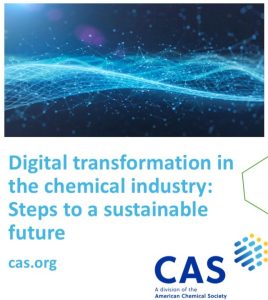Abstract:
This article elaborates on how substantial reductions can be achieved if waste incineration is stopped. The mandatory requirements for blending of biofuels in the EU. How this leads to gasification rather than incineration and further downstream processing to make bio- chemicals like bio-methanol. The feasibility of bio-methanol plants along with examples of where it has been tried out and the potential for bio-methanol in the fuel scenario.
The author concludes the article with how this is relevant for India and Govt. thoughts on the same and potential for such plants in India.
Introduction
Each year for the last decade, the UN Environment Programme’s Emissions Gap Report has compared where greenhouse gas emissions are headed, against where they should be to avoid the worst impacts of climate change. Each year, the report has found that the world is not doing enough. Emissions have only risen, hitting a new high of 55.3 GtCO2 equivalent in 2018. The UNEP Emissions Gap Report 2019 finds that even if all unconditional Nationally Determined Contributions (NDCs) under the Paris Agreement are implemented, we are still on course for a 3.2°C temperature rise.
Our collective failure to act strongly and early means that we must now implement deep and urgent cuts. This report tells us that to get in line with the Paris Agreement, emissions must drop 7.6 percent per year from 2020 to 2030 for the 1.5°C goal and 2.7 percent per year for the 2°C goal. The size of these annual cuts may seem shocking, particularly for 1.5°C. They may also seem impossible, at least for next year. But we need to try.
Fossil CO2 emissions from energy use and industry, which dominate total GHG emissions, grew 2.0 percent in 2018, reaching a record 37.5 GtCO2 per year.
Hence there is a distinct need for us to find ways to reduce the CO2 emissions as much as possible.
Situation in EU regarding reduction of GHGs
Over the last years many power generation plants have moved from coal to waste incineration. These plants need to now move from waste incineration which lets out a lot of CO2 into the atmosphere, to methods for converting the waste to bio-chemicals. Such a conversion to biochemicals not only gives the benefit of use of a biochemical but also reduces the emission of CO2 by half as compared to incineration.
On the other hand we also have the increasing requirement to blend bio-fuels in petrol. country’s legislation during the implementation of RED I
To date, certain European member states have initiated the mandatory blending requirements of advanced biofuels in their legislation. Most of these mandatory blends essentially were earlier introduced in the (2010-2020).

The Table on the right provides an overview of several of EU member states with their growing demand of advanced biofuel mandatory blending requirements between 2019 and 2020.
Hence in Europe there is a big opportunity to replace incineration of Municipal Solid Waste (MSW) to gasification. The reason being the gas produced can be used for subsequent production of bio-chemicals.
Also in case of power generation, gasification can achieve high electrical efficiencies.
Gasification of Waste
Gasification is mainly a high temperature partial oxidation process for converting carbonaceous materials into a synthesis gas composed mainly of Carbon Monoxide and Hydrogen.
While there are different gasification processes, the HTW process is a perfect fit for waste and biomass. This technology has been recently acquired by GIDARA Energy B.V. from ThyssenKrupp Industrial solutions.
A commercial scale plant was started up at Berrenrath, Germany to convert brown coal into methanol. The Berrenrath plant achieved plant availabilities of 8000 hours per year. The Berrenrath plant has also run a programme to run RDF feedstock to the gasifier. RDF is the unrecyclable fraction after separating the different recyclable fractions of MSW. The composition of RDF is mainly biomass (wood/paper) and residual plastics.
Another HTW plant converted 100% biomass into ammonia. Due to the excellent results, Sumitomo Heavy Industries selected the HTW process for municipal solid waste gasification plant that started up in Japan in Niihama in 2000.
Enerkem is already operating a waste to chemicals plant in Alberta, Canada details of which are as follows:
Type: single-line methanol-ethanol production commercial facility Status: initiated production of methanol in 2015 and ethanol in 2017
Feedstock: post-sorted municipal solid waste (after recycling and composting) Products: methanol, ethanol
Capacity: 38 million litres / 10 million gallons per year.
Research done on this subject.
A lot of work has been done on Waste to Methanol. Suffice it to refer to the outcome of one such study done in 2017 which has been published.
Following is an excerpt from Bioresource Technology,Volume 243 November 2017,Pgs 611-619 Waste-to-methanol: Process and economics assessment https://doi.org/10.1016/j.biortech.2017.06.172
Highlights
Bio-methanol production via high temperature conversion of Refuse-derived-fuel (RdF).Waste-to- methanol (WtM) process and related economics were assessed.
With respect to waste-to-energy (WtE) approach, this solution allows various advantages. In considering the average market cost of methanol and the premium as biofuel, the WtM approach results in a ROI (Return of Investment) of about 29%, e.g. a payback time of about 4 years.
WtM process halves GHG emissions with respect to methanol production from natural gas.
Methanol Opportunities
The diagram below gives a bird’s eye view of the various feedstock possibilities and the possible products from Methanol synthesis and the markets

Furthermore it is pertinent to note that production of syngas has multiple market applications such as:
Diesel – Car industry
In India the average diesel consumption is about 100 million tonnes per year. Also there is an export of about 36 million tonnes per year. This industrial fuel is the lifeblood of Indian manufacturing, transport and agriculture making it the country’s most consumed petroleum product.
Bio-methanol can be converted into DME, MTBE and /or biodiesel and blended in diesel. So it may soon be necessary for the diesel that is exported to the EU from India to have some amount of biomethanol blended between 3.5% and 14%.
Maritime – Gasoil Industry
There is a good possibility that they switch to 100% methanol or a hybrid system that will use 50% methanol.
Aviation – Jet fuel
Between 1-3 billion liters of aviation biofuel production is anticipated to be required by 2024. This means clearly that rapid upscaling will be required. The International Air Transport Association (IATA) has called for a transition where biofuels should result in a reduction of 50% of the present CO2 emissions by 2050 by this industry. This translates into a requirement of 400 billion liters of biobased jet fuel by 2050.
Sustainabilty and CO2 reduction
The Table below gives an indication of how much CO2 emissions can be avoided by use of renewable methanol. Since road transport makes up almost two thirds of overall transport emissions, widespread adoption of vehicles powered by renewable methanol would dramatically lower CO2 emissions in transportation,as shown below:
Well-to-wheel CO2 emission – (from Danish Department of Energy):

“Methanol has many applications, both as fuel and as a chemical feedstock to other vital industrial production and manufacturing processes. With a wealth of available renewable feedstocks, from biomass municipal waste to exhaust carbon and power from renewable sources, methanol has shown itself to be a versatile, affordable and stable energy source that’s well suited to use in transportation and industry. It has clear potential to help reduce greenhouse gas emissions if it’s adopted in place of fossil fuels.
There’s no magic bullet when it comes to renewable energy. A range of solutions will be needed to meet different consumer, industrial and geographic demands for fuel, heat and power. For example, electrification is an excellent solution to many light-duty, land-based energy demands, but for heavy vehicles and in industries like shipping and aviation, the technology and infrastructure does not currently exist to make this possible. They will continue to require liquid fuels: renewable methanol is one of the most sustainable and cleanest options.”
The graph below gives us an impression of the extent of Carbon avoidance potential with the installation and operation of a 60 KTA bio-methanol plant using RDF.

A single 60.000 MT bio-methanol facility will support in:Source: GIDynamics B.V.
- Handling waste equivalent to 290.000 households
- Reducing carbon emissions of 94.000 tons per year (CO2eq).
The ultimate carbon saving potential is 1.3 million tons CO2e for 10 years (considering 600 KTA installed capacity). Minimum case assumes requirement based on RED II (65% savings over fossil fuels)
Highest value assumes including CCS/CCU, which is assumed as part of the base case for plant 1. In case ISBL steam and power production, the carbon saving potential can further increase.
The Indian scene
With an eye on reducing pollution and fuel costs, Union Minister of Road and Transport Nitin Gadkari, on December 9, 2017, announced on a plan to allow blending 15 percent methanol with petrol. He said methanol made from coal costs only Rs 22 per litre and can thus lower fuel costs.
It must be noted that well-to-wheel emissions for coal-derived methanol can be extremely high. Thus, for methanol-blended fuel to actually reduce pollution, proper manufacturing of coal-based methanol must be followed.
Petrol supplied in India is already blended with ethanol, however, due to the limited production of ethanol, this is not all across. Gadkari also mentioned that the petroleum ministry has been asked to look into improving this instead of building expensive petrol refineries.
He also said that various plants in India can already produce methanol, but the qualities or its sufficiency was not mentioned.
Methanol-blended automotive fuel (petrol and diesel) is already in use in a few markets in various blended percentages right from 3 percent to 85 percent. Certain applications, for example some classes of racing cars, run on 100 percent methanol.
Petrol can be blended with both ethanol and methanol and it is likely India will follow this mix. But there’s no word on the exact percentage that’ll be used as of now.
Regular internal combustion engines can run lightly blended fuels with little to no modifications required, but as the percentage of the blend increases, vehicle adjustments are required.
While the government had a firm stance on bringing in electric vehicles and even dissuading full hybrids from entering the market, it now seems open to exploring other strategies to reduce pollution.
According to an article in the Economic Times on December 23,2019 the government is looking at introducing methanol-blended fuel pan India – a move that can potentially reduce one’s fuel bill by atleast 10%, lower vehicular pollution levels by over 30% and save the exchequer’s 5000 Crore in annual import bill.
Road transport highways minister Nitin Gadkari has written to Petroleum Minister Dharmendra Pradhan, asking him to “make all efforts”to make methanol widely available for commercial use at fuel stations according to the article.
The Ministry of Road Transport and Highways has notified regulatory standards for methanol blends M!5, M85 and M100 or neat methanol. The automobile industry is backing the move . Multi-fuel option is definitely worth exploring from energy security point of view” according to the Director General – Society of Indian Manufacturers (Siam)

Niti Aayog member VK Saraswat, who has been helming the methanol economy project since its inception two years ago, confirmed to ET that 65,000 km of trial run on M15 blended fuel has been successfully completed and there is no tweaking required in vehicles to run on methanol blended fuel. The think tank had projected annual reduction of $100 billion in crude imports by 2030 if the country moves to 15% blended fuel both for transportation and cooking.
Conclusions and Recommendations
As is evident from the COP25 meeting as well as the catastrophes occurring around the world like vagaries of weather, forest fires ( now creating havoc in Australia), icebergs melting in the Arctic and volcanoes erupting( New Zealand White Island), there is an urgent need for all countries to pull their socks and put in place firm measures to reduce the GHG emissions.
There is also an urgent need to move from waste incineration to more climate conducive measures like production of bio-chemicals. The daily per capita generation of municipal solid waste in India ranges from about 100 g in small towns to 500 g in large towns. The recyclable content of waste ranges from 13% to 20%. This means about 80 -100 million tonnes of waste generation in a year considering the present population.
Gasification is a commercially proven technology which leads to production of downstream chemicals from synthesis gas.
Use of bio-methanol blending in automotive fuels will bring about a drastic reduction in the Carbon footprint. This should be the way to go to secure the lives of the future generation.
Editor’s Note:
G.I. Dynamics B.V., based in the Netherlands, specializes in providing technology, integrated solutions and advisory to make the oil, gas and chemical industry more efficient and more sustainable. Furthermore, together with a broad network of partners the company develops biorefineries around the globe, and provides additional advisory services like Life Cycle Analysis, Project Management Consultancy and Business & Financial Modelling.
































